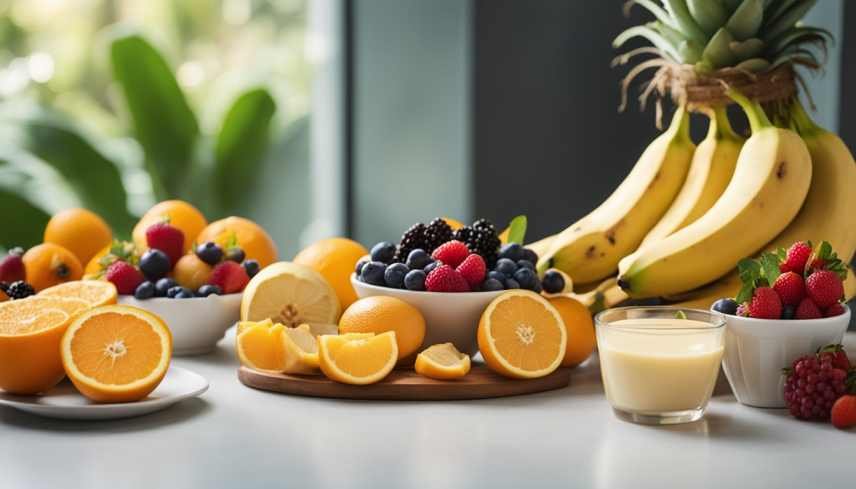Knowing what fruits not to mix in a smoothie can enhance its taste and nutritional value, because not all combinations are beneficial. Certain fruits can clash in flavor or texture, leading to an unappetizing drink and potential digestive discomfort. Understanding which fruits to avoid can elevate the smoothie experience and ensure it remains healthy and enjoyable.
For instance, blending citrus fruits like oranges with bananas may result in a flavor profile that is overwhelming rather than refreshing. Additionally, some fruits, such as strawberries and melons, contain varying levels of acidity that can affect digestion when combined.
Choosing the right fruits not only affects taste but also influences the smoothie’s nutrient profile. Avoiding incompatible combinations helps to maintain a balanced mix, allowing the body to absorb nutrients more effectively.
Fundamentals of Smoothie Making
Creating a perfect smoothie involves understanding several key principles. From selecting the right blender to achieving the desired texture, each element plays a crucial role in the final product. This section outlines essential factors in smoothie preparation, ensuring a balanced and enjoyable drink.
Choosing the Right Blender
The choice of blender significantly impacts the quality of the smoothie. High-performance blenders, such as Vitamix* or Ninja*, efficiently blend ingredients into a creamy texture. They can crush ice and blend fibrous fruits without leaving chunks.
For those on a budget, personal blenders like NutriBullet are still effective for single servings. A basic blender may struggle with tough ingredients, resulting in a gritty smoothie. The motor power and blade design dictate blending effectiveness.
If you are thinking about investing in a budget blender, I recommend this NutriBullet, it’s the one I use.
*This blog contains affiliate links, meaning that if you click on one of the product links and make a purchase, we may receive a small commission at no additional cost to you. This helps support our blog and allows us to continue to create content.
Understanding Smoothie Texture and Consistency
Achieving the right texture is vital for a satisfying smoothie. A creamy texture is often the goal, which can be achieved by incorporating ingredients like yogurt or nut milk. These add richness and help blend other components seamlessly.
Thicker smoothies benefit from frozen fruits and ice, creating a slushy consistency. Adjusting the amount of liquid base, such as coconut water or milk, allows control over thickness. For a smoother finish, it’s recommended to add liquid slowly until the desired consistency is reached.
The Role of Liquid Bases in Smoothies
Liquid bases serve as the foundation of a smoothie, influencing flavor and texture. Common choices include milk, nut milk, and coconut water. Each option contributes distinct flavors and nutritional benefits.
For instance, almond milk offers a nutty taste, while coconut water adds a refreshing element. The choice of liquid can also affect sweetness. For added flavor, consider incorporating honey, maple syrup, or natural sweeteners like dates. The liquid base should complement the other ingredients and help achieve a balanced blend.
Importance of Balance in Sweetness and Flavor
Balancing sweetness and flavor is essential for a harmonious smoothie. Excessive sweetness from fruits like bananas or added sugars can overwhelm the palate. To counteract this, incorporating slightly tart ingredients, such as berries or greens, enhances the overall taste.
Using spices like cinnamon or vanilla extract can elevate the flavor profile without increasing sweetness. Experimenting with proportions allows for personalization, catering to individual preferences. Striking the right balance results in a refreshing, tasty drink.
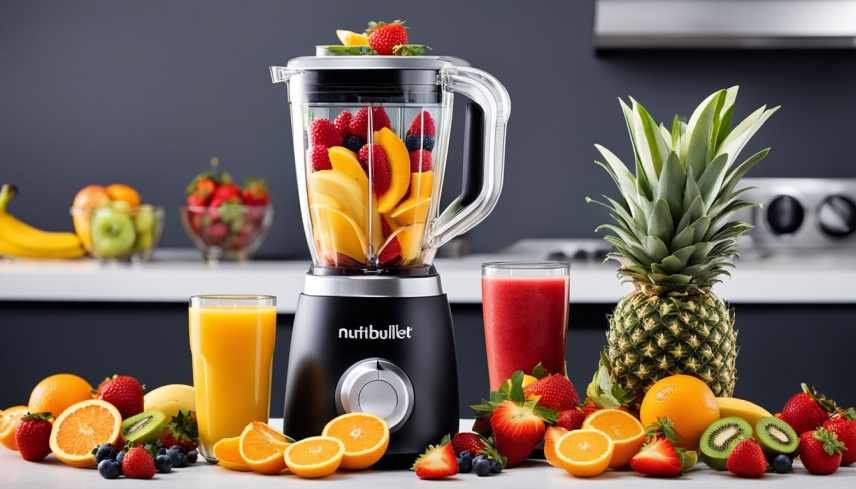
Selecting Ingredients for Nutrition and Health
Choosing the right ingredients is essential for creating nutritious smoothies that support health goals. Emphasizing proteins, healthy fats, and a variety of fruits and vegetables can enhance both nutrient content and flavor.
Incorporating Proteins and Healthy Fats
Adding protein sources to smoothies can help with muscle repair and satiety. Options like Greek yogurt or tofu provide a creamy texture while increasing protein intake.
Healthy fats are also important. Ingredients such as avocado or nut butter contribute omega-3 fatty acids and vitamin E. These fats promote heart health and improve the absorption of fat-soluble vitamins like A, D, E, and K.
Including a balance of proteins and healthy fats enhances the smoothie’s nutritional profile and creates a filling drink.
Adding Fruits and Vegetables for Vitamins and Fiber
Fruits and vegetables serve as vital sources of vitamins, fiber, and antioxidants. Berries such as blueberries and strawberries are rich in vitamin C and potassium, while kale and spinach provide essential nutrients and dietary fiber.
Using a mix of colorful produce ensures diverse nutrients are included. Dark leafy greens boost iron and calcium levels, while citrus fruits offer hydration and added flavor.
Incorporating these elements creates a smoothie that supports digestion and immune function, making it a practical choice for health-conscious individuals.
Utilizing Seeds and Nuts for Texture and Nutrition
Seeds and nuts add both texture and a host of nutritional benefits to smoothies. Chia seeds, for instance, are high in fiber and omega-3s, promoting digestive health and supporting heart function.
Nuts like almonds and walnuts can provide a crunchy contrast while delivering protein and healthy fats. These ingredients can enrich the flavor, making the smoothie more enjoyable.
When blended well, seeds and nuts contribute vital nutrients, making the overall smoothie more satisfying.
Fruits to Avoid in Smoothies
Certain fruit combinations can lead to digestive issues or undesirable flavors. Awareness of which fruits to mix or avoid can enhance both the taste and health benefits of a smoothie.
Avoiding Fruits That Affect Digestion
Some fruits can hinder digestion, particularly when combined. For example, combining acidic fruits like pineapple and mango with sweet fruits such as bananas can lead to discomfort. Pineapple contains bromelain, an enzyme that assists in digestion but might react negatively with incompatible fruits. Citrus fruits can also create issues when mixed with sweet options, potentially resulting in gas or bloating.
To maintain digestive harmony, one should pair berries (like strawberries and blueberries) with other similar fruits. These combinations generally promote better nutrient absorption without causing digestive disturbances.
Choosing Fruits That Pair Well Together
Mixing fruits with complementary flavors can enhance smoothie palatability. Sweet fruits such as bananas work well with other sweet varieties like apples and grapes. Conversely, sour fruits like lemons or limes can elevate sweetness and brightness when combined with sweeter fruits.
A recommended combination includes berries and spinach, which not only balance flavor but also add nutrients. It is advisable to avoid mixing overly sweet fruits with sour ones, as this can create an unbalanced flavor profile.
Watching Out for High Sugar Content
Several fruits have high sugar content, which can impact overall calorie intake and sugar levels. For instance, bananas and grapes are high in natural sugars and can lead to spikes in blood sugar when consumed in large amounts.
To manage sugar consumption, it’s helpful to pair these fruits with lower-sugar options, such as leafy greens or avocado. This approach can balance flavors and reduce the overall sugar load of a smoothie, making it more suitable for those monitoring their intake.
Considering Allergic Reactions and Food Intolerances
Allergies are a significant factor when selecting fruits for smoothies. Common allergens include apples and certain berries, which can trigger reactions in sensitive individuals. Celiac disease and lactose intolerance may also lead to digestive issues when paired with certain fruits.
Awareness of personal food intolerances, like nut allergies or sensitivities, is crucial in ensuring a safe smoothie experience. When unsure about fruit compatibility, opting for a basic combination of low-allergen fruits, while avoiding known triggers, is advisable to prevent adverse reactions.
Enhancing Smoothies Without Compromising Health
A well-crafted smoothie can be nutritious and delicious without sacrificing health. By focusing on natural ingredients and innovative enhancements, smoothies can provide maximum benefits.
Using Natural Sweeteners
To elevate sweetness without refined sugars, natural sweeteners are a preferable choice. Honey, maple syrup, and dates offer unique flavors and health benefits.
- Honey is rich in antioxidants, aiding digestion.
- Maple syrup contains minerals like manganese and zinc, supporting immune function.
- Dates are naturally sweet and high in fiber, promoting gut health.
Using these alternatives not only enhances taste but also contributes to better nutrition. A small amount goes a long way in achieving the desired sweetness.

Opting for Healthy Fats Over Dairy Products
Incorporating healthy fats can result in a creamier texture and a nutritional boost. Instead of dairy, consider options like avocado, cashew milk, and coconut water.
- Avocado adds creaminess along with beneficial monounsaturated fats.
- Cashew milk is low in calories and offers a rich flavor.
- Coconut water provides hydration and essential electrolytes.
These alternatives can enhance the smoothie’s texture, making it more satisfying while maintaining health-focused objectives.
Innovating with Herbs and Spices
Herbs and spices can transform a smoothie, adding flavor and nutritional benefits. Ginger and cinnamon are excellent choices for enhancing taste.
- Ginger is known for its anti-inflammatory properties and can support digestive health.
- Cinnamon not only adds warmth but may also help regulate blood sugar levels.
Incorporating these ingredients creatively can make smoothies not just enjoyable but also beneficial for health. Using herbs and spices also diversifies flavors, encouraging more frequent consumption of nutrient-dense smoothies.
Practical Tips for Smoothie Preparation
Effective smoothie preparation involves careful ingredient selection and attention to detail. Proper techniques ensure a pleasant texture and accommodate various dietary needs. The following tips address ingredient handling, achieving smooth consistency, and making adjustments for specific diets.
Prepping and Storing Ingredients
Fruit and vegetable preparation is critical for a smooth blend. Fresh produce should be washed, peeled, and cut into manageable pieces. Chopping ingredients promotes an even blend and enhances texture.
Storage Tips:
- Refrigeration: Store fresh ingredients in airtight containers to maintain freshness.
- Freezing: Freeze ripe fruits to ensure a cold and creamy smoothie without adding ice.
- Labeling: Label containers with dates to monitor freshness.
Using ingredients at their peak ripeness improves flavor. Overripe or unripe components can adversely affect taste and texture.
Creating Smoothies with Consistent Texture
Achieving consistency is essential for a satisfying smoothie. The choice of blending speed and duration impacts the final texture.
Tips for Consistency:
- Layering: Add liquids first to facilitate blending. Follow with soft ingredients and finish with hard components.
- Blender Type: A high-speed blender can create a smoother consistency. For standard blenders, blending longer may be necessary.
Adjusting ice content can enhance or compromise texture. Less ice creates creaminess, while too much can lead to a slushy texture.
Adjusting Ingredients for Dietary Restrictions
Accommodating dietary needs helps create enjoyable smoothies for everyone. Substituting conventional ingredients ensures inclusivity.
Common Dietary Adjustments:
- Dairy-Free: Use almond milk, coconut milk, or oat milk as alternatives to dairy.
- Gluten-Free: Most fruits and vegetables are inherently gluten-free. Ensure any added ingredients or supplements are labeled as such.
- Vegan: Avoid dairy and consider plant-based protein powders for added nutrition.
Carefully evaluating ingredient labels helps ensure compliance with dietary restrictions. These adjustments can enhance taste while catering to personal preferences.
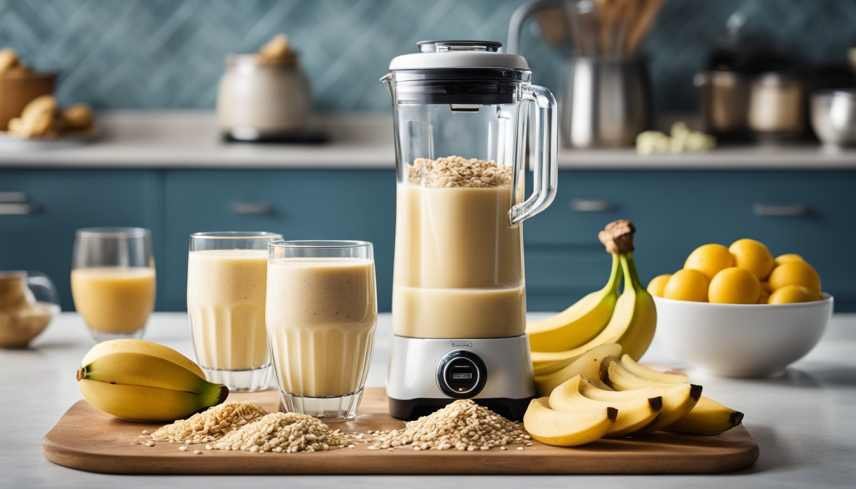
Creative and Nutritious Smoothie Recipes
Combining fruits and ingredients can lead to flavorful and healthy smoothies. The following recipes focus on breakfast, post-workout recovery, and nutritious desserts, providing specific benefits and simple instructions.
Breakfast Smoothies for Energy
A nutritious breakfast smoothie can jumpstart the day with energy and essential nutrients. A popular recipe is the Banana Oatmeal Smoothie. It includes:
- 1 ripe banana
- ½ cup rolled oats
- 1 cup almond milk
- 1 tablespoon honey
- ½ teaspoon cinnamon
Blend these ingredients until smooth. The oats provide complex carbohydrates, while the banana adds potassium. This combination keeps energy levels steady throughout the morning.
Another option is the Berry Spinach Smoothie. It features:
- 1 cup mixed berries (strawberries, blueberries, raspberries)
- 1 cup fresh spinach
- 1 cup coconut water
- 1 tablespoon chia seeds
This smoothie is rich in antioxidants and fiber, promoting vitality for the day.
Post-Workout Smoothies for Recovery
Post-workout smoothies should replenish lost nutrients and aid muscle recovery. The Chocolate Peanut Butter Protein Smoothie is an excellent choice:
- 1 banana
- 1 tablespoon cocoa powder
- 1 tablespoon peanut butter
- 1 scoop protein powder
- 1 cup unsweetened almond milk
This combination offers protein, electrolytes, and antioxidants, helping to rebuild muscles post-exercise.
Another option is the Tropical Recovery Smoothie:
- 1 cup pineapple
- ½ cup Greek yogurt
- 1 tablespoon honey
- 1 cup coconut water
Pineapple contains bromelain, which may help reduce inflammation. This smoothie provides hydration and replenishes glycogen stores.
Dessert Smoothies That Are Actually Good for You
Dessert smoothies can satisfy sweet cravings while being nutritious. The Date and Cocoa Delight is a rich option:
- 5 Medjool dates, pitted
- 1 tablespoon cocoa powder
- 1 cup almond milk
- ½ teaspoon vanilla extract
High in fiber and natural sweetness, this smoothie provides a chocolatey treat without added sugar.
Another healthy dessert choice is the Green Mint Chocolate Smoothie:
- 1 banana
- 1 tablespoon cacao nibs
- 1 cup spinach
- ½ teaspoon peppermint extract
- 1 cup almond milk
This indulgent smoothie contains vitamins from spinach and a refreshing mint flavor, making it a guilt-free snack option.
Conclusion: What Fruits Not to Mix in a Smoothie
Knowing what fruits not to mix in a smoothie is essential for maintaining good nutrition and wellness. Certain combinations can lead to digestive discomfort or unbalanced flavors.
Fruits to Avoid Mixing:
- Bananas and Oranges: This duo can cause bloating due to conflicting digestion times.
- Strawberries and Milk: While delicious, this combination might be harder for some to digest.
- Kiwi and Melons: These fruits can irritate the stomach when blended together.
When crafting smoothie recipes, consider not just flavor but also how fruits interact. Healthy choices enhance nutrient absorption without causing adverse digestive effects.
Incorporating fruits wisely can improve the nutrient profile of a smoothie, supporting overall wellness. It is crucial to experiment with combinations while paying attention to how the body responds.
Frequently Asked Questions
This section addresses common queries regarding fruit combinations and their impact on smoothies. Understanding which fruits to avoid can help in creating healthier and more effective smoothie options.
What combinations of fruits are less advisable for weight loss smoothies?
Fruits high in sugar, such as bananas and mangoes, may not be suitable for weight loss smoothies when combined with other sugary fruits. Mixing these with avocado can also lead to unnecessary caloric intake. Choosing lower-sugar fruits can enhance the smoothie’s effectiveness for weight management.
Which fruits should be avoided together for a nutritious breakfast smoothie?
Citrus fruits like oranges and grapefruits can interact negatively with dairy products, leading to digestive discomfort. Additionally, combining heavy fruits like bananas with watery fruits like watermelon may dilute nutritional benefits. It is best to select fruits that complement each other in texture and nutrient profile.
Are there negative effects of mixing certain fruits and vegetables in a smoothie?
Combining fruits and vegetables with differing sugar content can result in uneven digestion. Certain fruits, like pineapple, may inhibit the absorption of nutrients from leafy greens. Identifying compatible pairs ensures a smoother digestive process and better nutrient retention.
Can blending fruits lead to increased sugar content in smoothies?
Blending multiple high-sugar fruits can significantly increase the overall sugar content of the smoothie. When fruits are liquefied, their sugars become more concentrated and can spike blood sugar levels. It’s advisable to balance sugary fruits with lower-sugar options to maintain healthier sugar levels.
What are the potential consequences of an unhealthy smoothie on well-being?
Regularly consuming unhealthy smoothies can contribute to weight gain due to high calorie and sugar content. This may also lead to energy spikes followed by crashes. Over time, poor smoothie choices can negatively impact overall health.
Which pairs of fruits are commonly recommended to avoid blending in a smoothie?
Combining bananas with grapes is often discouraged due to their high sugar levels. Bananas and cherries are another pair that may not work well together as they can overload the smoothie with sugars. Sticking to more balanced combinations can enhance the smoothie’s health benefits.
Delicious Carrot and Banana Smoothie for Weight Loss Success
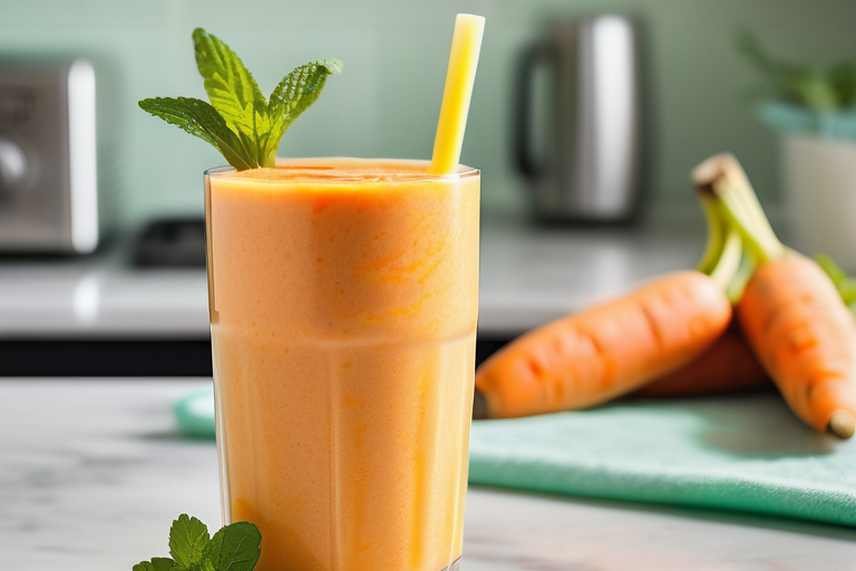
If you’re looking for a refreshing and healthy way to start your day or satisfy your sweet tooth, look no further than a carrot and banana smoothie. This energizing banana carrot smoothie recipe, is perfect to start your day just right. Filled with fruits and vegetables, but also healthy hemp seeds and spices, it makes for a creamy and thick smoothie that’s naturally super sweet and flavorful.
Continue reading: Delicious Carrot and Banana Smoothie for Weight Loss Success
Zesty Orange and Carrot Immunity Booster: Your Daily Dose of Wellness
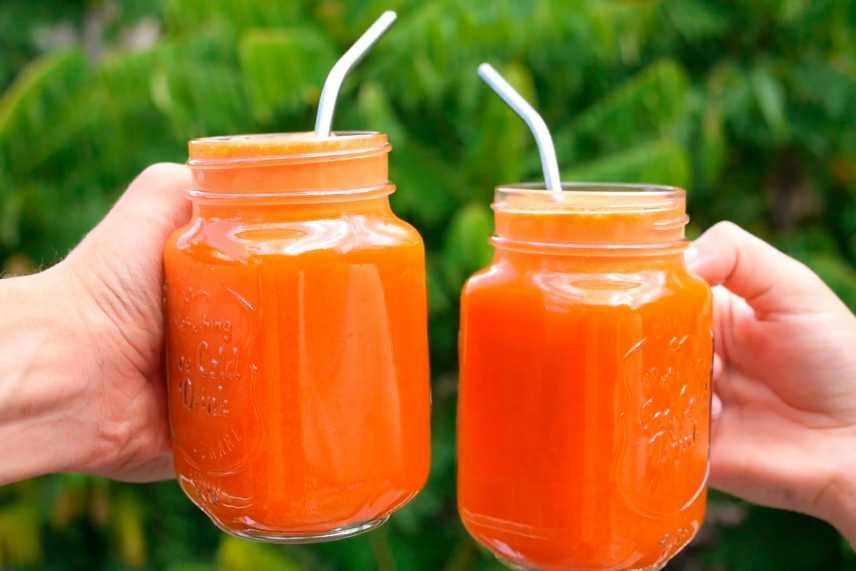
For those of us navigating the challenging waters of weight loss and wellness, the Zesty Orange and Carrot Immunity Booster emerges as a beacon of health and flavor.
This vibrant smoothie is not just a treat for the taste buds but a powerful ally in our journey towards optimal health. Let’s dive into why this delicious blend is more than just a smoothie—it’s a lifestyle choice.
Continue reading: Zesty Orange and Carrot Immunity Booster
Recent Posts
Vegan Meal Replacement Smoothie Recipes for Quick and Nutritious Fuel
Vegan meal replacement smoothies offer a convenient way to pack essential nutrients into a quick and delicious beverage. These recipes allow individuals to enjoy a balanced, healthy meal while...
Carrot Smoothies for Weight Loss: A Delicious Way to Shed Pounds
Carrot smoothies for weight loss have gained popularity as an effective choice for busy women looking to lose weight. Packed with vitamins, minerals, and fiber, carrots provide essential nutrients...

